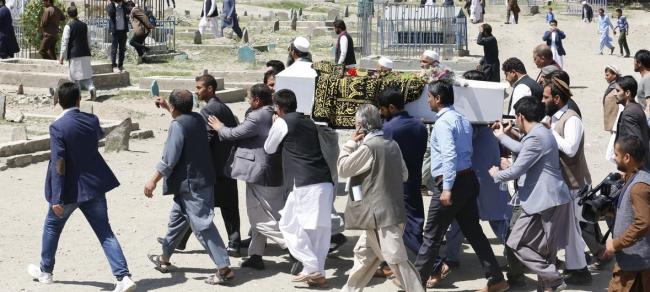
Civilian deaths in Afghanistan hit record high – UN
New York, July 16 (IBNS): The number of civilians killed in Afghanistan hit a record high in the first half of the year, despite last month’s unprecedented ceasefire between the Afghan Government and the Taliban, the United Nations reported on Sunday.
According to the latest figures released on Sunday by the UN Assistance Mission in Afghanistan, known as UNAMA, there were 5,122 civilian casualties (1,692 deaths and 3,430 injured) in teh first six months of 2018 – a three per cent overall decrease in casualties from last year.
But civilian deaths were up by one per cent, the most recorded in the same time period since UNAMA began documentation of civilian casualties in 2009.
The continuing record high casualty rates are being inflicted on civilians despite the unilateral ceasefires by Government and Taliban that occurred over the Eid al-Fitr holiday period between 15-17 June 2018.
Aside from casualties resulting from two Da’esh/Islamic State of Iraq and the Levant-Khorasan Province (ISKP)-claimed suicide attacks in Nangarhar during the ceasefires, UNAMA said that it had documented almost no other civilian casualties during the break in fighting.
“The brief ceasefire demonstrated that the fighting can be stopped and that Afghan civilians no longer need to bear the brunt of the war,” said Tadamichi Yamamoto, the top UN official in Afghanistan.
“We urge parties to seize all opportunities to find a peaceful settlement – this is the best way that they can protect all civilians,” said Yamamoto, who is also head of UNAMA.
The report, which comes amid fears of an uptick in violence, also noted that the use of improvised explosive devices (IEDs) in attacks by Anti-Government Elements remained the leading cause of civilian casualties.
The combined use of suicide and non-suicide IEDs caused nearly half of all civilian casualties. Continuing trends first documented last year by UNAMA, the majority of IED casualties were caused by suicide and complex attacks, which again were responsible for record high civilian casualties, resulting in 1,413 civilian casualties (427 deaths and 986 injured), a 22 per cent increase.
Ground engagements were the second leading cause of civilian casualties, followed by targeted and deliberate killings, aerial operations, and explosive remnants of war. Civilians living in the provinces of Kabul, Nangarhar, Faryab, Helmand and Kandahar were most impacted by the conflict.
“UNAMA continued to document the toxic consequences of this conflict, with Afghan boys and girls killed, maimed, sexually assaulted, abused, recruited and used by parties to the conflict,” said Danielle Bell, UNAMA’s human rights chief.
She said that conflict-related violence continued to erode the rights of children to education, healthcare, freedom of movement and other fundamental rights, as well as family life, playing outdoors and simply enjoying a childhood free of the “brutal effects of war.”
Actions by the Government of Afghanistan to prevent civilian casualties continued, resulting in a reduction of civilian deaths and injuries from their operations, particularly from ground fighting, an area that UNAMA has consistently focused its advocacy with parties to the conflict in recent years.
Fardin Waezi/UNAMA
Support Our Journalism
We cannot do without you.. your contribution supports unbiased journalism
IBNS is not driven by any ism- not wokeism, not racism, not skewed secularism, not hyper right-wing or left liberal ideals, nor by any hardline religious beliefs or hyper nationalism. We want to serve you good old objective news, as they are. We do not judge or preach. We let people decide for themselves. We only try to present factual and well-sourced news.







